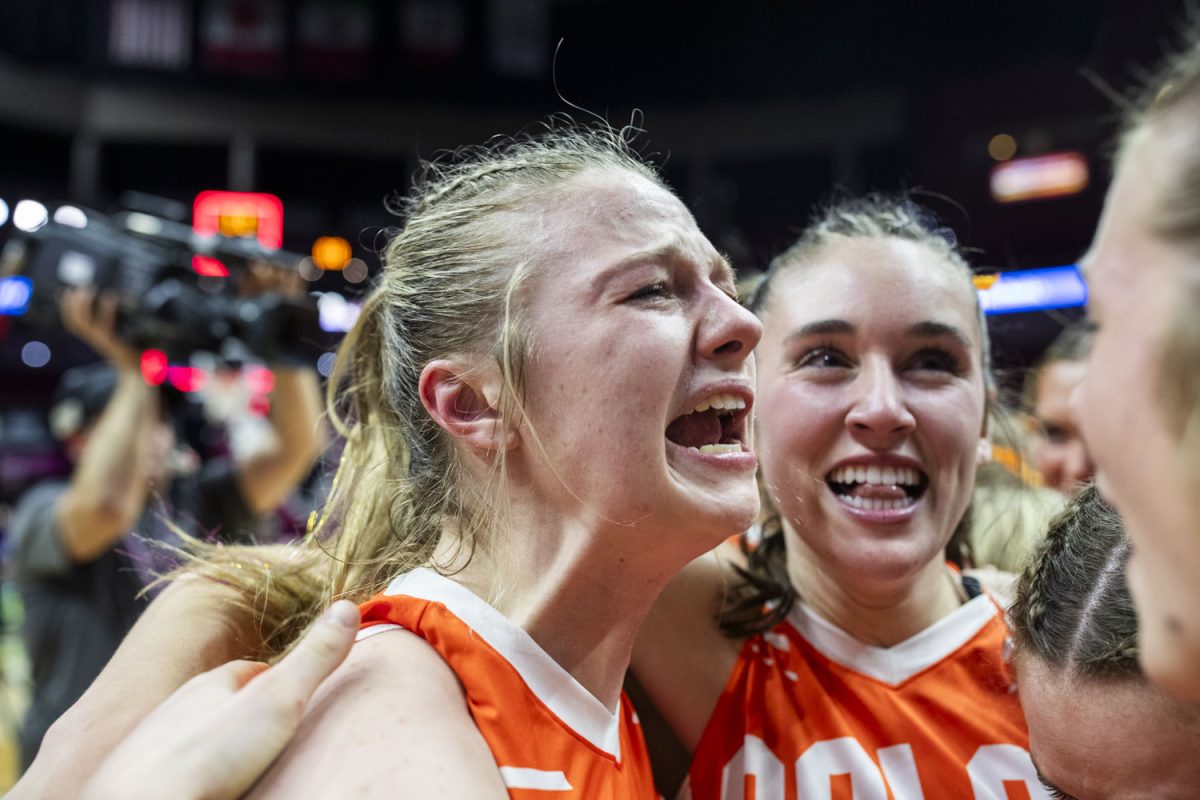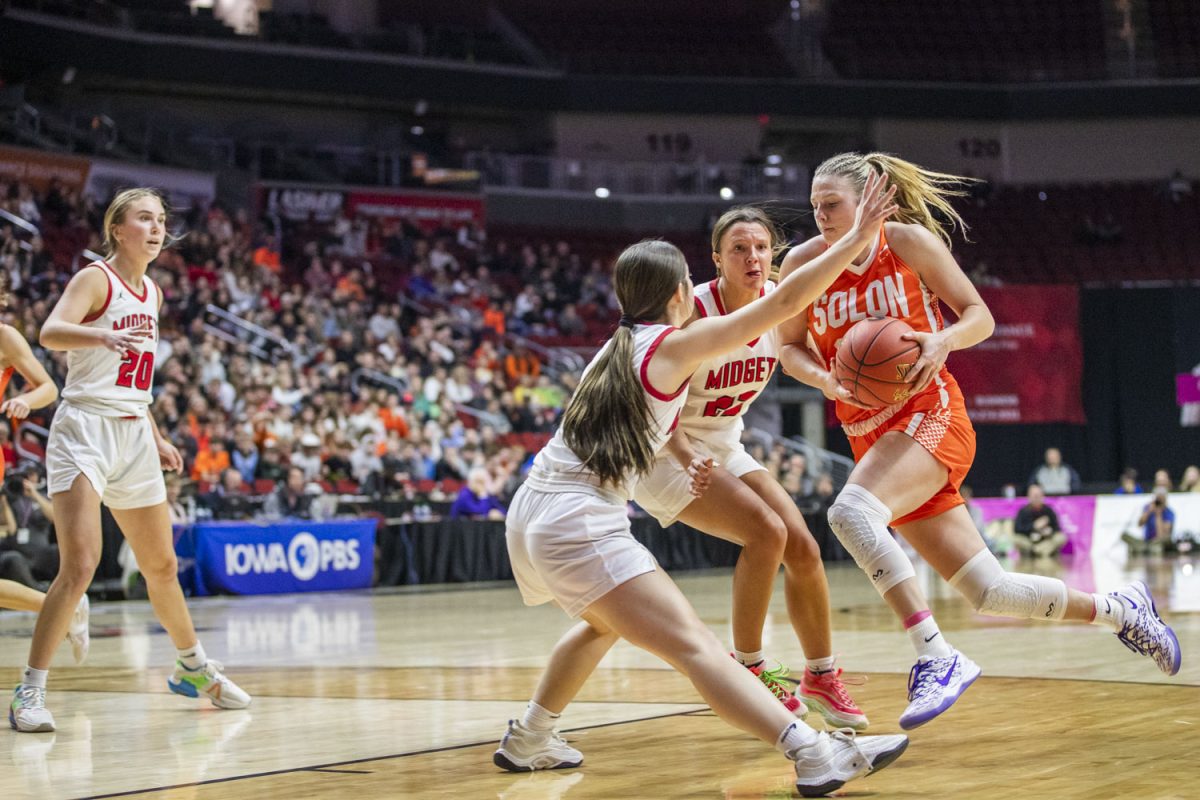Iowa’s second offensive series began with a heavy dose of Mark Weisman. His first-down rush went for 4 yards, then a second-consecutive carry went for 11.
The Hawkeyes held the trend on the next two plays, but Damon Bullock carried the ball for distances of 9 and 2 yards. This two-headed running attack was a constant throughout the Aug. 31 game, and it was perhaps the most potent aspect of Iowa’s (0-1) offensive game plan.
“We wanted to split it up evenly so nobody gets too tired,” Bullock said after Northern Illinois (1-0) escaped Iowa City with a 30-27 win. “Everyone gets an equal number of carries. When one back comes in, the defense is still tired against fresh ‘backs.”
Weisman and Bullock combined for 37 carries and 176 yards. Neither found the end zone, which might have been the only negative part of the running game. Each received a nearly even number of carries.
Bullock started the game in the backfield with a 4-yard rush on Iowa’s first play from scrimmage, but Weisman led the two running backs by reaching the century mark on 20 carries. Bullock finished with 17 carries for 76 yards.
The two-headed attack kept the Husky defense hesitant. Weisman provided his usual pounding running style, often times carrying potential tacklers with him. Bullock used his speed to burst through holes and escape tacklers in open space.
“The game plan was to just rotate us in,” Weisman said. “Last year, we had one running back each game. You always want running backs to be fresh. Most teams do a two-running-back system now, and I think it’s a great thing.”
Weisman noted that it wasn’t a completely perfect day. Aside from the inability to score, he was candid about his turnover, which occurred in that second offensive series.
Weisman’s fumble led to a Northern Illinois field goal — and he quickly pointed out that without it, the game could’ve been different — the Huskies won by just 3 points.
“Fumbled the ball. Can’t do that,” Weisman said, noticeably frustrated about his blunder. “We lost by 3, and they got 3 points off that [fumble].”
Still, the running game was seen as a positive, and it will likely become more diverse as more healthy backs begin to get carries. Jordan Canzeri also got 2 rushes for 6 yards against the Huskies. The established running game helped to take the pressure off quarterback Jake Rudock, too. It was noticeable in each half — during the first 30 minutes, when Iowa’s offense looked as good as ever, Rudock’s numbers were stellar. He completed 13-of-21 passes for 188 yards and a touchdown pass. In the latter half, when the Hawkeye offense seemed to abandon the running game, Rudock’s numbers slipped to 8-of-16, just 68 yards, and 2 interceptions.
Both Weisman and Bullock said it would be the coach’s decision on how the running game will operate moving forward. Rudock said it helps diversify the offense. Historically speaking, some of Iowa’s best wins have come when the rushing attack is the bulk of the Hawkeye offense.
“There’s some positives there, certainly,” Iowa football coach Kirk Ferentz said of the running game. “We rushed for over 200, I think it was, but again, if you turn it over three times, some of those stats get negated. We were 200 both ways but when the ball gets turned over, it’s tough to overcome it sometimes, and it makes it hard.”






